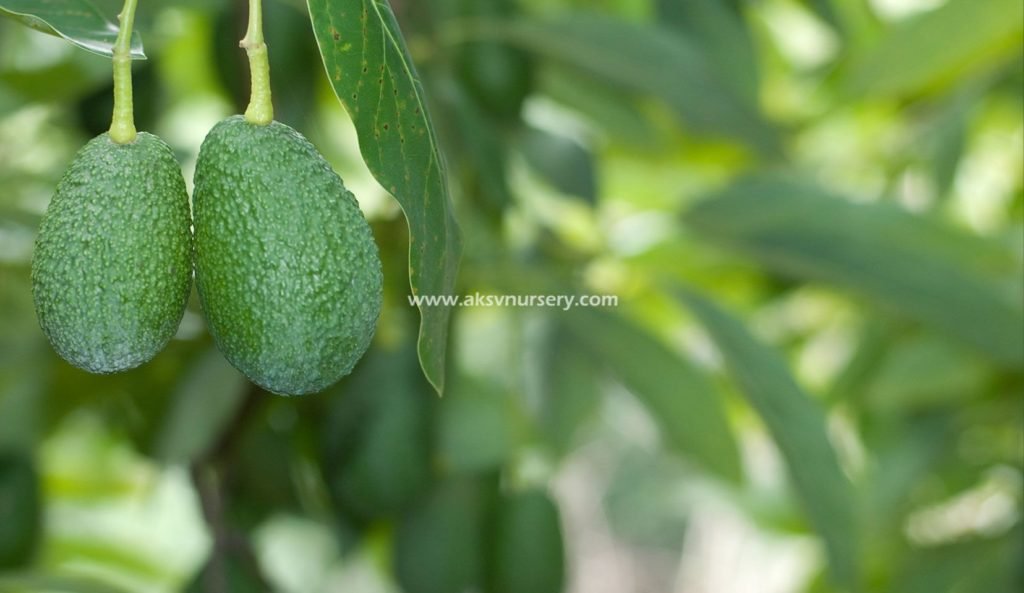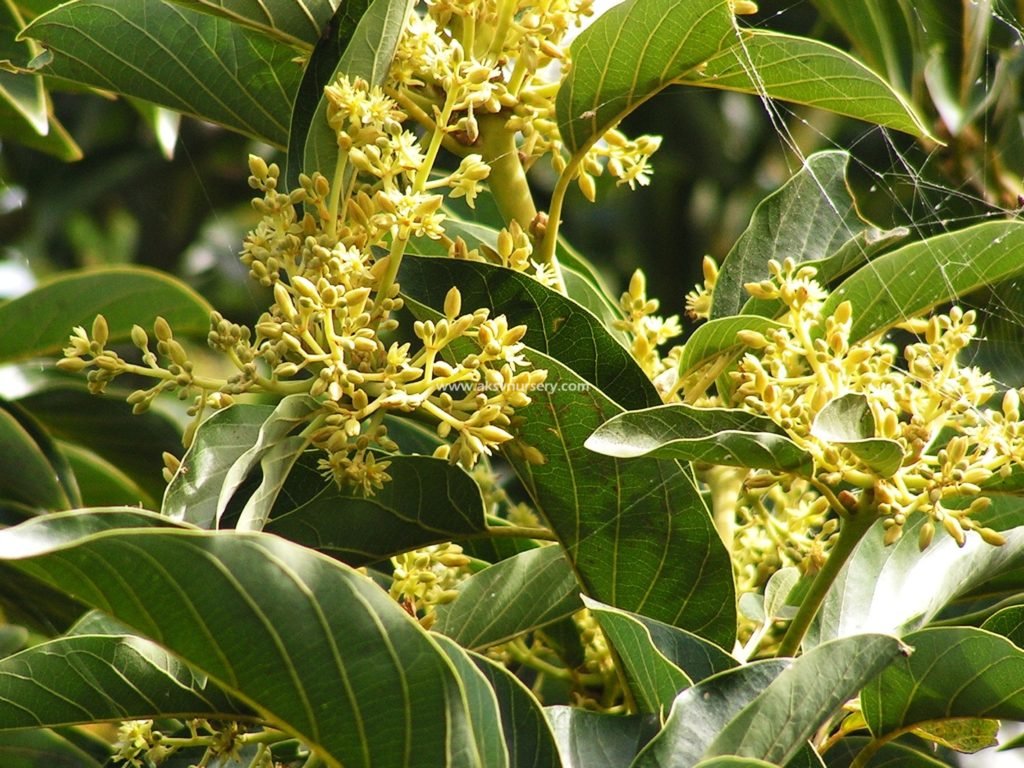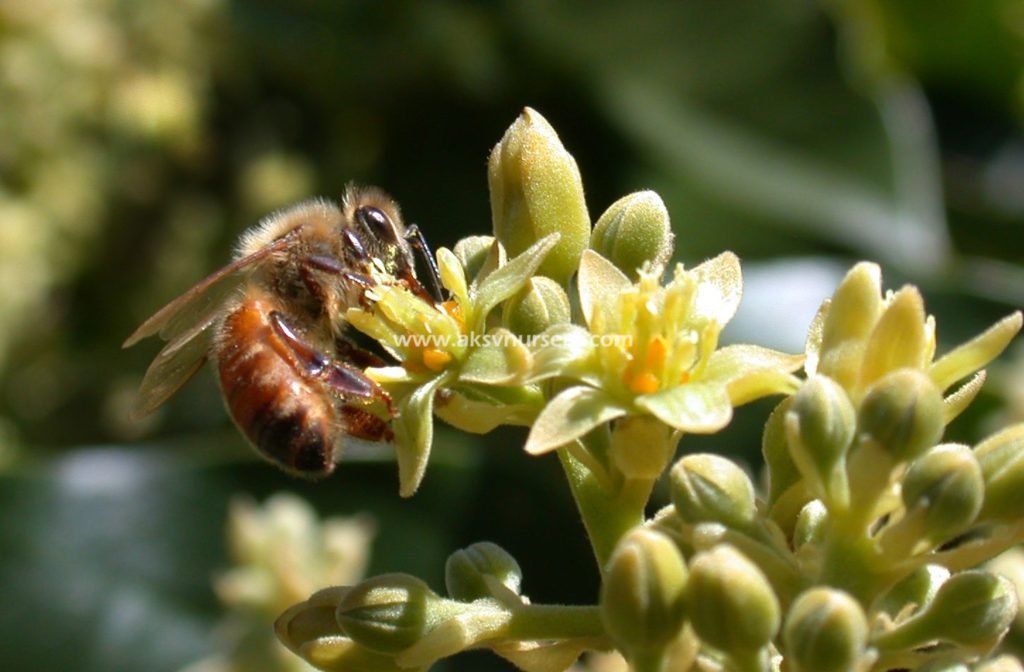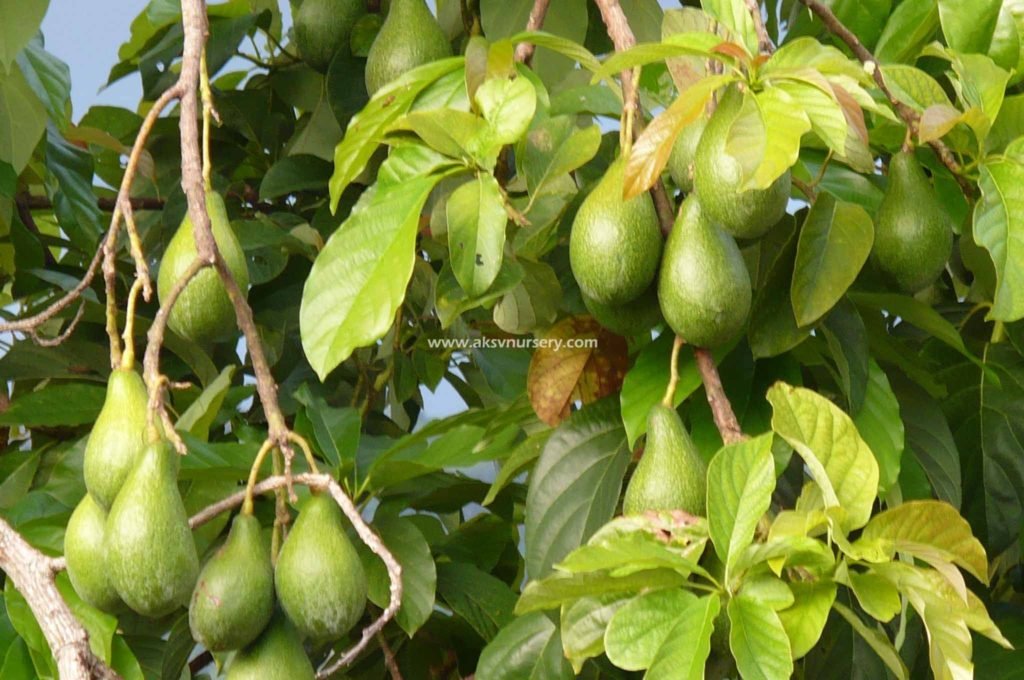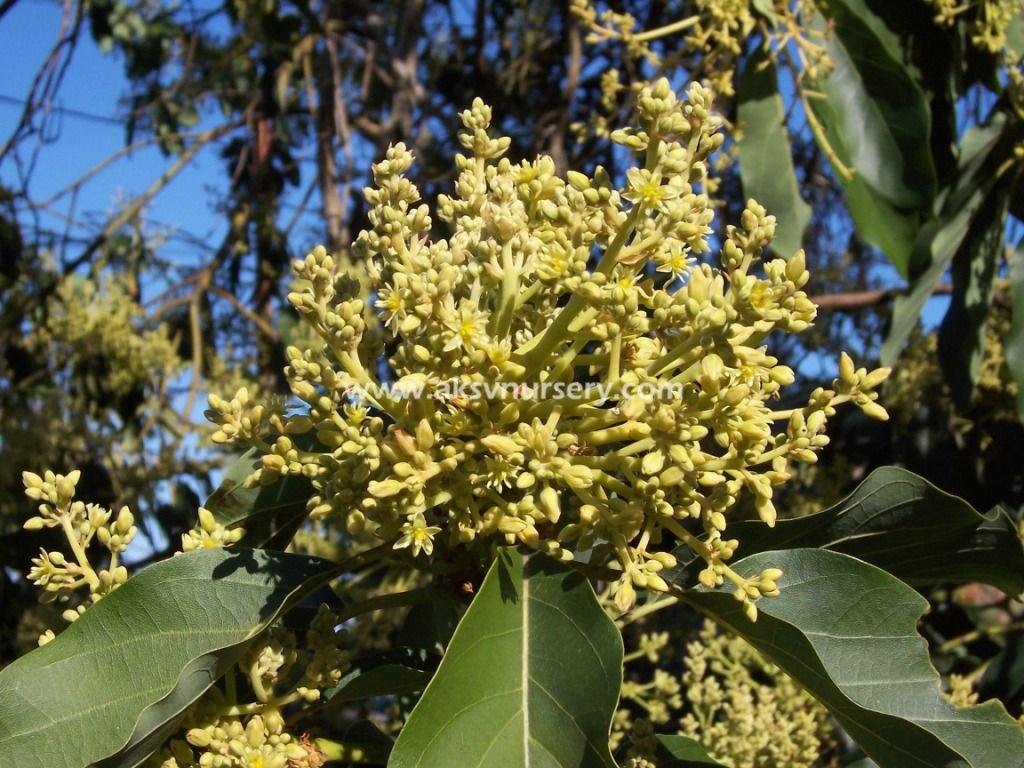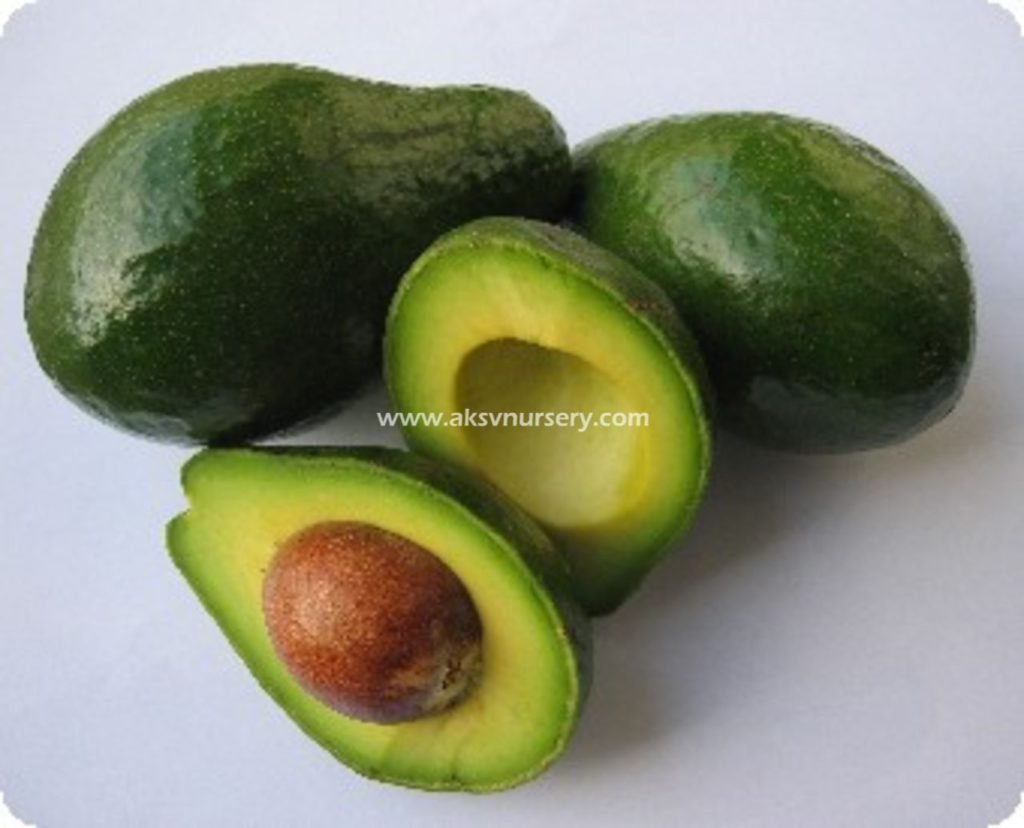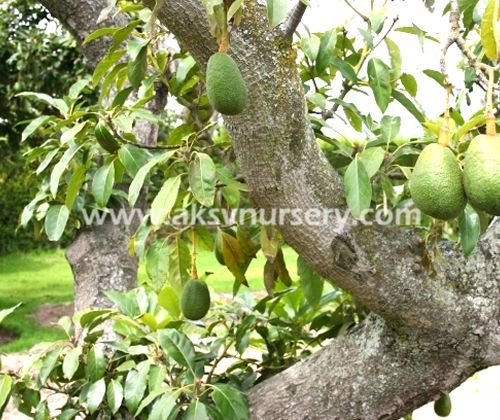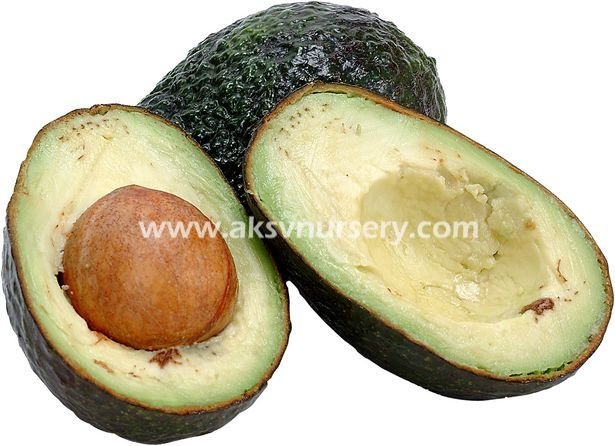Persea americana, Persea gratissima
Family: Lauraceae
Avocado, Alligator Pear, Aguacate, Abacate
Origin: Southern Mexico
The avocado is a dense, evergreen tree. It is fast growing and can with age reach 80 feet, although usually less, and generally branches to form a broad tree. Some cultivars are columnar, others selected for nearly prostrate form. Growth is in frequent flushes during warm weather in southern regions with only one long flush per year in cooler areas. Grafted plants normally produce fruit within one to two years compared to 8 – 20 years for seedlings. West Indian type avocados produce smooth round, glossy green fruits that are low in oil and weigh up to 2 pounds. Guatemalan types produce medium ovoid or pear-shaped, pebbled green fruits that turn blackish-green when ripe. The fruit of Mexican varieties are small (6 – 10 ounces) with paper-thin skins that turn glossy green or black when ripe. The flesh of avocados is deep green near the skin, becoming yellowish nearer the single large, inedible ovoid seed. The flesh is hard when harvested but softens to a buttery texture.
The Avocado fruit is an important food in South America and is nutritious with high levels of mainly unsaturated oils, minerals, vitamins and reasonable levels of protein. Clinical studies have shown that avocado oil can reduce blood cholesterol.
The name ‘Avocado’ originates from the Aztec name ahuacacuauhitl meaning testicle tree! Avocado trees produce thousands of flowers and only about one in 5000 sets fruit.
The Avocado is remarkable in its ability to thrive under a broad range of environmental conditions. It needs water and no frost and prefers good drainage, sun, and dry air.

